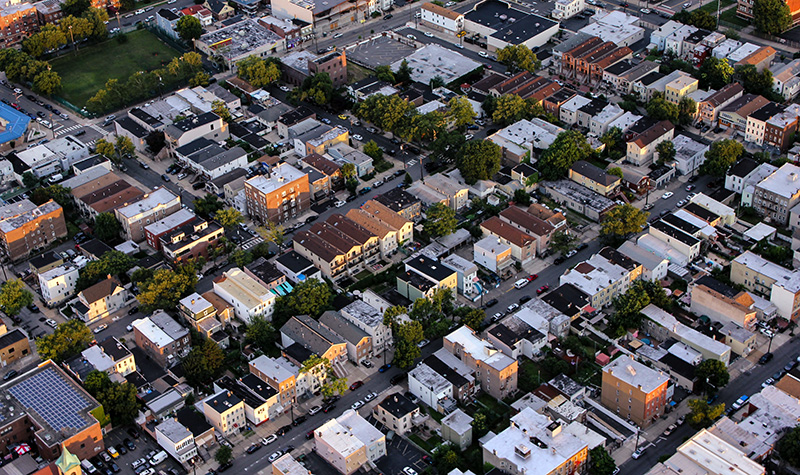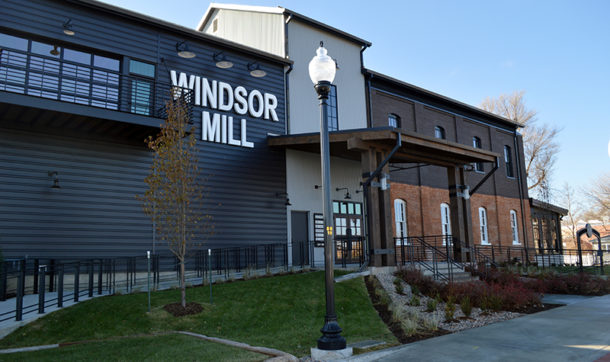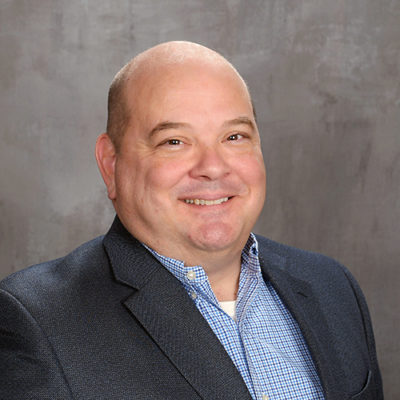Quality of Life and Community Resilience: Ensuring a Vibrant Future for Downtown
 By Jason Ilstrup and Mike Scholl
By Jason Ilstrup and Mike Scholl
A community’s goal for its downtown is that it enhance the quality of life for residents and visitors by providing a hub where people come together. Over the past 18 months, however, the resiliency of downtowns has been tested more than it has for decades. Among the keys to ensuring a strong future for downtowns are (1) ensuring they evolve as needed to be welcoming for all and, (2) with community leaders at the helm, transforming vacant, underused spaces into housing that can bring new vitality to downtown.
Vibrant Downtowns: What the Future Looks Like
Over the past year and a half, an ongoing global pandemic and a period of social justice uprisings in many city centers have brought unprecedented challenges to the vitality of downtowns across the United States.
Downtowns also experienced the acceleration of some of the economic trends that had already been happening in the marketplace, such as moving away from shopping in retail locations, the growing popularity of a delivery economy, and people wanting a more experiential feel in stores when they visit brick-and-mortar retailers.
As local leaders consider how best to build back their downtowns, it will be in their best interest to not simply reinvent the wheel.
Four factors make a downtown successful: (1) a large resident base; (2) a sizable number of workers employed in the area; (3) diverse and vibrant events; and (4) a healthy tourism sector. All four of those have been detrimentally impacted in 2020 and 2021.
Now we’re seeing an evolution of downtowns as communities reimagine what their downtowns could look like. It’s important for community leadership to be intentional and humble in doing this work, keeping these important guidelines in mind:
- Ensure that those involved in the reimagining process are a true cross-section of the individuals who live, work, and play in the community.
- Strive to be more equitable, inclusive, and diverse than in the past when shaping what downtown has to offer, making sure that soulful moments are happening downtown for every soul.
As communities build back their downtowns, it’s helpful to remember: Historically, downtowns are resilient. Seismic changes have impacted downtowns forever — people have written off downtowns after fires, after other plagues, and after wars — but local residents have always continued to bring themselves together to live and thrive in their communities’ downtowns.
Think Like a Developer: Taking Charge of Downtown Real Estate
Almost every community has that “white elephant” in its downtown: a neglected building or space that everyone wishes would be put to better use. Meanwhile, most communities also could benefit from increasing their downtown residential population.

Despite the coexistence of a demand for downtown housing and space that could fill that need, many local leaders hold out hope that a developer will enter the picture and initiate a project that will solve the problem. While attracting a developer is more realistic for bigger municipalities, for small or mid-sized communities, it often is not the best strategy. A better route can be for downtown managers to learn to think like and even become their own developer.
Ayres’ urban planning and economic development professionals can empower Main Street professionals to take on this challenge. They work with local downtown development leaders to help them identify promising real estate assets in their communities and walk them through the steps of transforming those spaces into new housing.
First questions will center around who owns the building identified as prime for a particular project and how the community can gain control of the real estate. In one scenario, a community may already own property that is unused or underused (for example, a vacated city hall now being used only for document storage). Alternatively, there may be a current property owner who wants to activate unused space and is interested in partnering with the city. In other situations, an absentee landlord may own a vacant or neglected building, and it may be in the municipality’s best interest to buy the property.
While taking the lead on downtown development can be challenging for local leaders, failing to gain control of underused real estate often is tantamount to putting the future of a community’s downtown in someone else’s hands.

About the Expert:
Jason Ilstrup is the President of Downtown Madison, Inc. (DMI), a member based non-profit working to create the best quality of life downtown for everyone. Prior to joining DMI, Jason worked in hotel management and development at HotelRED, the Iron Horse Hotel and the Madison Concourse Hotel. Before entering hospitality, Jason served as a legislative aide and legal counsel for several politicians.

About the Expert:
Mike Scholl has two decades of nationwide planning and economic development experience with consultants, community groups, and most recently as economic development manager for the City of Loveland, CO. Among Mike’s economic development experience is strategic planning, downtown redevelopment, comprehensive economic development, brownfield remediation, and grant writing.
Jason Ilstrup will share more about the future of downtowns and Mike Scholl will share more about community leaders taking on the role of developer to improve their downtowns during a free presentation on Oct. 19. The presentation is part of Ayres’ six-part webinar series, Reimagining Resilience. The recorded presentation also will be available online after Oct. 19. Visit Reimagining Resilience for more information.


Post a comment: